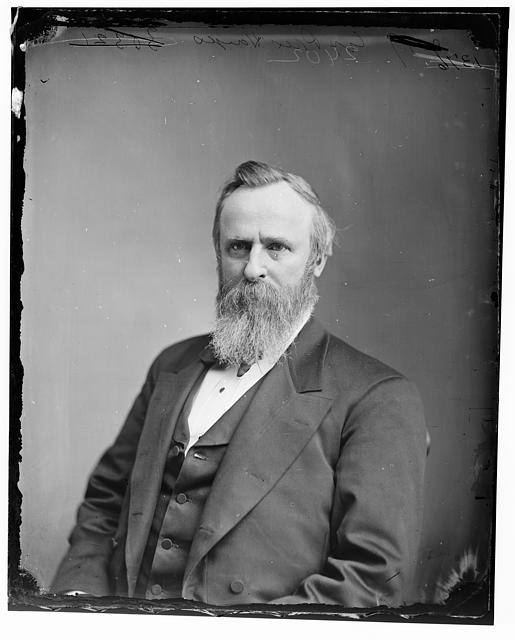The Great Railroad Strike of 1877 was a pivotal event in American labor history, with significant implications for workers’ rights and the role of the federal government. This article explores the impact and legacy of the strike during Rutherford B. Hayes’ presidency, examining its causes, consequences, and the subsequent reforms it inspired.
Background and Causes:
The late 19th century was marked by rapid industrialization and the expansion of the railroad industry, which employed a substantial portion of the American workforce. However, poor working conditions, low wages, and the increasing power of corporate monopolies led to mounting discontent among railroad workers.
In July of 1877, a wage cut by the Baltimore and Ohio (B&O) Railroad triggered a series of strikes that quickly spread throughout the country. Workers from other railroads joined the movement, demanding higher wages and improved working conditions. The discontent was further fueled by the economic depression of the time, which left many workers unemployed and desperate.
The Strike and Federal Intervention:
The strike began in Martinsburg, West Virginia, on July 14, 1877, when B&O workers walked off the job. It soon escalated into a national uprising, as rail workers in various cities, including Pittsburgh, Chicago, and St. Louis, joined the protest. The strike disrupted rail transportation, causing immense economic losses.
President Rutherford B. Hayes initially hesitated to intervene in the strike, leaning towards supporting state governments in handling labor disputes. However, as the situation worsened and violence erupted, he eventually deployed federal troops to restore order. Thousands of soldiers were dispatched to affected areas, using force to break up the strikes.
Consequences and Reform Efforts:
While the immediate objective of suppressing the strike was achieved, the Great Railroad Strike of 1877 had far-reaching consequences. It exposed the vast disparity between the power of corporations and the rights of workers, instigating an intense debate about the role of government in labor disputes.
The strike brought attention to the long-standing grievances of workers and sparked conversations about the need for labor reforms. In response to the unrest, President Hayes created the U.S. Commission on Labor in 1884, which aimed to investigate labor issues and propose necessary reforms. This commission laid the foundation for future labor legislation.
Furthermore, the strike highlighted the precarious nature of labor relations during a time of economic upheaval. It served as a catalyst for the formation of labor unions, such as the Knights of Labor and the American Federation of Labor, which would go on to play significant roles in advocating for workers’ rights.
Legacy and Impact:
The Great Railroad Strike of 1877 marked a turning point in the history of labor relations in the United States. The federal government’s intervention in the strike set a precedent for increased involvement in future labor conflicts, emphasizing its responsibility to protect workers’ rights.
Hayes’ decision to send federal troops to suppress the strike received mixed reactions. While it temporarily restored order, critics argued that it favored the interests of corporations over those of workers. This debate sparked ongoing discussions about the appropriate balance between government regulation and corporate power.
The strike also served as a stark reminder of the power of collective action in effecting change. The organizing efforts and solidarity among railroad workers during the strike demonstrated the strength of labor movements.
The Great Railroad Strike of 1877 had a profound and lasting impact on American labor history. Under President Hayes’ administration, the strike exposed the harsh realities faced by workers and spurred widespread calls for labor reforms. While its immediate suppression may have provided short-term relief for the railroad companies, the strike ultimately laid the groundwork for future advancements in workers’ rights. It serves as a prominent example of the challenges and triumphs experienced by American workers in their fight for fair treatment and improved working conditions.
